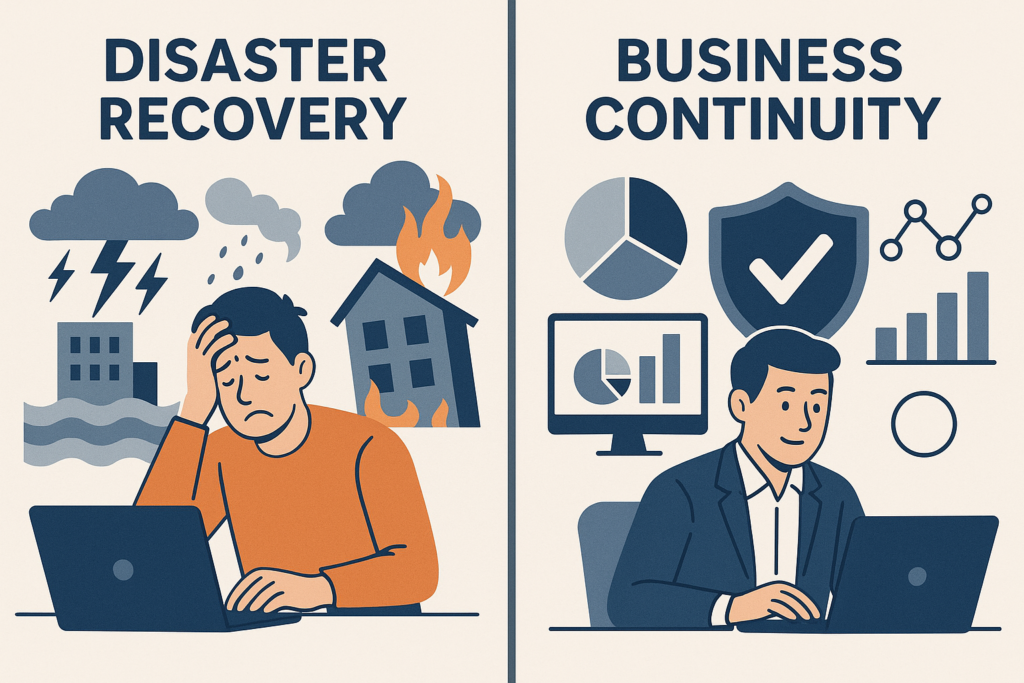Disaster recovery (DR) and business continuity (BC) are often used interchangeably—but they’re not the same. For businesses in Illinois, understanding the difference is key to building a truly resilient operation that can withstand cyberattacks, power outages, natural disasters, and more.
Disaster Recovery focuses on restoring IT systems, applications, and data after a disruption. It’s primarily technical and often includes:
- Data backup strategies (cloud and on-prem)
- Virtual machine restoration
- Server and storage replication
- Recovery time and recovery point objectives (RTO/RPO)
DR ensures that your files, emails, and databases are recoverable after an incident. But it doesn’t guarantee that your business operations can continue during the outage.
Business Continuity, on the other hand, is broader. It’s about keeping your business functioning during and after a disruption. It includes:
- Staff communication plans
- Temporary worksite planning
- Role reassignments
- Vendor and client notification strategies
- Manual processes for key tasks
BC ensures that you can still serve customers, process transactions, and operate essential functions—even if systems are down.
For example, if ransomware takes your network offline, your DR plan helps you restore data. Your BC plan helps your staff know what to do while recovery is underway—who calls clients, how orders are processed manually, etc.
Both plans are essential. Together, they protect your data, your operations, and your reputation. Many modern IT providers offer integrated disaster recovery and business continuity solutions—like Datto—which combine fast backup with operational planning.
Don’t wait until an emergency to figure out the difference. Prepare now to protect your future.
If you are interested in learning more, schedule a call today.

